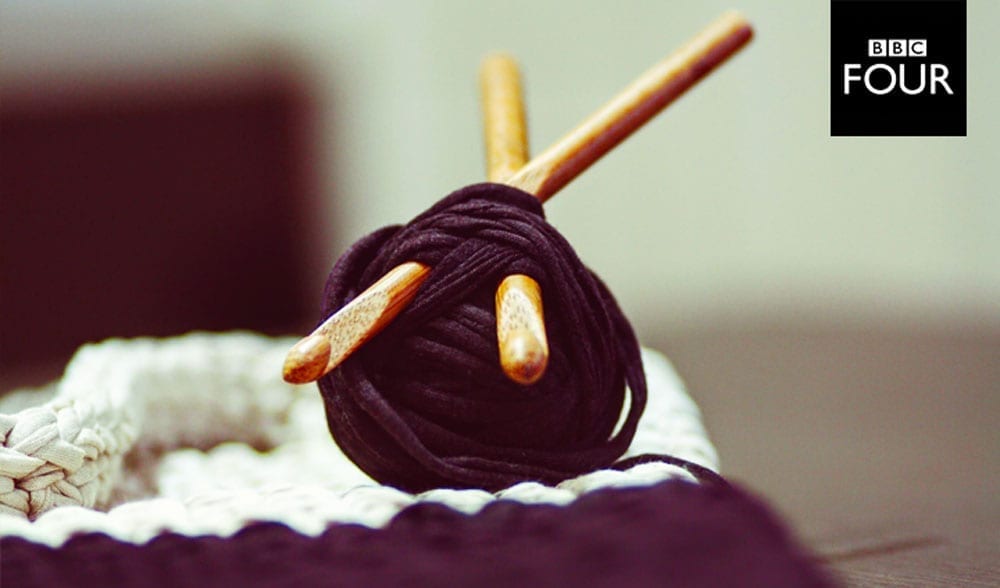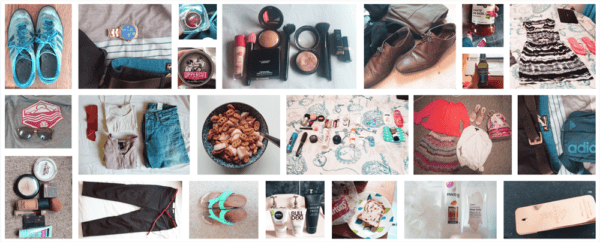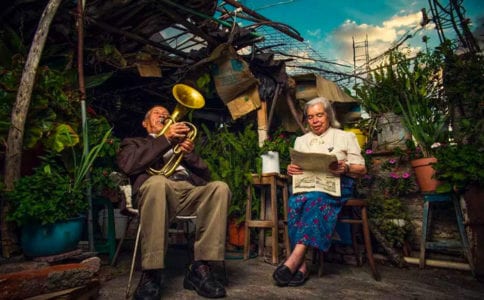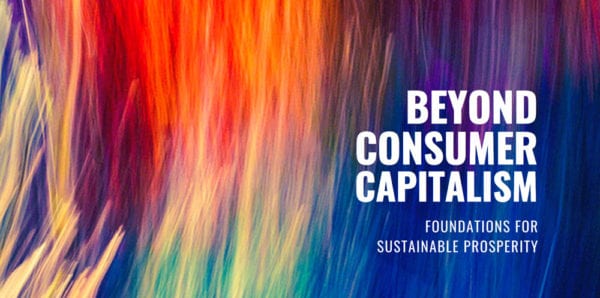Making connections, experiencing flow, and countering consumption: crafting is more fun with less stuff
One of the research projects within CUSP is concerned with how wellbeing can be enhanced through immersing oneself in challenging activities, leading to a state of ‘flow’. BBC Four’s recent MAKE! Craft Britain programme is a perfect showcase of that concept. The programme is connecting people to traditional crafts, past and present generations — and, importantly, to those with whom we are crafting. It is not only about what you are doing, but also where and with whom you are doing it, that makes crafting so important for wellbeing.

I recently came across a trio of programmes from the BBC called MAKE! Craft Britain, showing as part of the 2018 Get Creative Festival. The premise is that small groups of people attempt a craft for the first time with an experienced instructor, spending one or two days in a workshop focusing on a single project. Cross stitching, knitting, mosaics, silver jewellery, letterpressing and rag rugging all featured, interspersed with other crafters displaying their favourite handmade items, and more importantly, why they do what they do and what they get from it.
This resonates with work we are undertaking in CUSP on the idea of having ‘more fun with less stuff‘, where we are exploring how wellbeing can be enhanced through immersing oneself in challenging activities, like crafting, leading to a state of ‘flow’, whilst simultaneously reducing our reliance on the pursuit of material goods. In MAKE! Craft Britain the emphasis was not only on the benefits to emotional wellbeing of learning a new craft, but also about the thrifty use of new materials, and the reworking of previously used ones. An old Victorian letterpress was still being used to print posters, small piles of wool scraps were crafted into meaningful pictures and then into seat covers, and piles of broken pottery and tiles became wall plaques.
Across all three programmes I was struck by how often the crafters referred to connections, not only in the form of physical (re)connections to the practice of a traditional, even sometimes ancient, craft, but also social connections to past generations. The act of creating something prompted nostalgic remembrances of crafting that used to take place in the home, “it reminds me of the olden days when my grandma did embroidery at home and I used to watch her” and helped them connect to and understand the pleasure family members derived from crafting “all of a sudden it makes sense why my mum and grandma used to knit so much”. We also saw how crafting today has the potential to connect to future generations, “When my baby grows up she can look at it and say ‘daddy made it’.”
But it was in the present moment people really made connections. Firstly, to the effect on their wellbeing of crafting, and the possibilities of achieving flow, where time seemed to stand still “I’m the most chilled out I have been for weeks”, and making things by hand “induces a soothing effect on your soul”. Secondly, and I believe equally importantly, they connected to others through the community they were crafting in. The participants could really have been making anything, it was that they were making it together. They bonded immediately over the experience of learning something new, laughed over their mistakes, showed each other what they had done, and celebrated when they had completed their projects.
I was therefore dismayed, but unfortunately not altogether surprised, by a recent news item, again on the BBC, about the rise of crafting presented as a marketing opportunity. Crafting, apparently is ‘big business’ and it has never been easier to ‘go out and buy stuff’. This newspiece was filmed at the start of one of the now many craft shows that have emerged to respond to (and drive) an increasing interest in crafting. I attended one of these events, once, – it is not for the faint hearted as the pressure to move round the crowded stalls and buy things is overwhelming, quite frankly unpleasant and entirely at odds with the actual experience of crafting. There is I think a real possibility that the excessive commodification of crafting leads people to derive more pleasure from the purchase of the requisite raw materials, tools and endless ‘kits’, than from the actual creation of the object. If that is the case, then there is a danger that the crafter may be considered a consumerist ‘dupe’ rather than ‘hero’ (Campbell 2005). But I would suggest that craft consumers are also, as Campbell argues, acting out of “a desire to engage in creative acts of self-expression” as evidenced by the rise of bloggers and YouTube ‘refashionistas’ connecting online to those who like to craft personalised items from unwanted ones.
Of course the fact that these craft fairs are so popular is also to some extent down to the upsurge of craft related programmes such as the Great British Sewing Bee, the Great Pottery Throw Down and the Big Painting Challenge. But there has similarly been a rise in the uptake of opportunities to go and learn a traditional craft, as in for example the Weald and Downland Museum in Singleton which offers courses throughout the year. The downside inevitably is that these courses are not cheap, and therefore not available to everyone, nor sometimes are the tools and materials needed to engage with the craft, so should these also be regarded as another form of enterprise, and consumption opportunity? Having attended several courses, and learnt that I am not the only serial attendee, that is entirely possible, but I would also argue that we not only go to learn how to create something personal, and unique, we also seek to make connections, with (initially) strangers, but also often with friends or family. In these settings, we are exactly replicating what was so good about the MAKE! programme, connecting to traditional crafts, past and present generations, and to those with whom we are crafting. It is not only about what you are doing, but also where and with whom you are doing it, that makes crafting so important for wellbeing. As one of the MAKE! instructors said before his group started cross-stitching, “stop, and have a look around you, because life will change for ever”.
__
Campbell, C. 2005. The craft consumer: culture, craft and consumption in a postmodern society, Journal of Consumer Culture, 5(1), pp.23-42.



